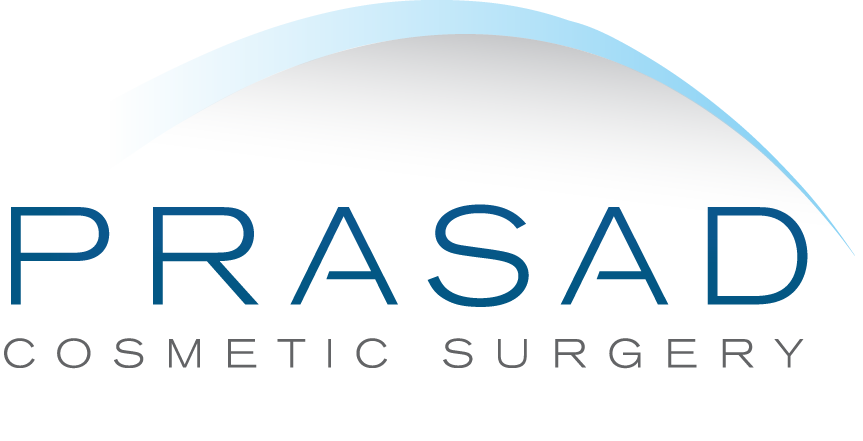What are the risks associated with eye bag removal surgery?
Eye bags are a concern for many people who come to my practice.
Mostly their concerns are centered around how tired or older their eye bags make them
look, and how often they are subjected to friends and family asking about whether they’re
getting enough rest or having a bad day.
The most common statement patients tell me is how tired they are of looking tired.
In reality, eye bags that are always present have nothing to do with how much sleep you
are getting.
Eye bags are an anatomic issue caused by something called lower eyelid fat prolapse.
Lower eyelid prolapse means the fat pockets around the eyes have pushed forward, resulting
in a bulge or herniation of fat that gives that puffy, tired appearance.
There are a few ways to address under eye bags depending on how severe they are.
Mild under eye bags can be improved by injecting filler into the hollow areas of the tear trough,
thereby camouflaging the puffiness.
More pronounced under eye bags, however, will require surgery.
Concerns about the risks of under eye bag surgery is something I address every day in
my practice.
I’m Dr. Amiya Prasad.
I’m a Board Certified Cosmetic Surgeon and Fellowship Trained Oculofacial Plastic & Reconstructive
Surgeon.
I’ve been in practice in Manhattan and Long Island for over 20 years.
I first trained in eye surgery before training in cosmetic and reconstructive surgery of
the eyes.
Helping people improve the appearance of their under eye area is a major area of focus in
my practice.
Eye bag surgery is a very common procedure I perform in my practice routinely pretty
much every day.
As mentioned earlier, significant under eye bags cannot be treated with filler in the
same way that mild under eye bags can.
This is because placing more volume into an area with a prominent eye bag will only make
it look puffier than it already is.
Surgery is the most definitive procedure for constantly puffy eye bags, and can help prominent
eye bags more effectively than an injectable filler can hide.
The objective of eye bag surgery is to remove and sculpt the fat pockets for a smoother
contour, as if you never had under eye bags.
Eye bag surgery can be approached in two different ways — via the transcutaneous method or
transconjunctival method.
The transcutaneous approach involves making an incision on the outside of the lower eyelid,
right beneath the eyelashes, through which the fat pockets are addressed.
This is in contrast to the transconjunctival method, where fat pockets are addressed through
the inside of the lower eyelid, so no external incision is made,
In my practice, I typically prefer using the transconjunctival method.
Although it can be technicality more challenging , I have found this approach to have consistently
successful outcomes.
Oftentimes, when doctors operate via the transcutaneous method, fat is removed, and what is seen as
excess skin is trimmed to reduce wrinkles, then sutures are placed to close the lower
eyelid incision.
This approach to the lower eyelid, can compromise the delicate support system.
While a well-performed surgery can make the external incision barely noticeable, a scar
of varying visibility is still present where the incision was closed.
Unnecessary skin removal can cause a skin shortage that ultimately leads to complications
such as ectropion and contribute to eyelid retraction.
Ectropion is what occurs when the lower eyelid becomes everted, or turned outwards,.
Eyelid retraction is the downward displacement of the lower eyelid, resulting in a rounded
look to the lower eyelids, and too much of the white part of the eyes being exposed called
scleral show.
In some cases, the eyelids are unable to fully close and the natural distribution of tears
is affected, leaving the inner eyelid and eye itself prone to irritation or infection.
As I mentioned earlier, I prefer the transconjunctival approach.
It’s a technically advance minimally invasive strategy.
This method allows me to address the fat pockets without compromising the integrity of the
support structures in the lower eyelid.
The natural eye shape is better preserved, there is less trauma around the eyes which
minimizes bruising and swelling.
Since there is no external incision, there is no scar, you can look natural, even from
up close, like you’ve never had the eye bags.
Instead of removing skin to improve wrinkles, I approach under eye wrinkles as an issue
of skin quality, not skin quantity.
I use platelet-rich plasma, or PRP, which is derived from your own blood, and contains
wound healing and growth factors that can stimulate collagen and increased blood supply
to the under eye area, improving the health and quality of thin eyelid skin, and make
it thicker.
I also use laser or radiofrequency treatment to resurface and tighten the under eye skin.
In my practice, I perform transconjunctival blepharoplasty under local anesthesia with
LITE IV sedation.
This is as opposed to general anesthesia, which means that my patients are able to recover
faster and can go home after the procedure.
In fact a good number of my patients say that if they knew it was this easy for them, they
would have had the surgery much sooner.
Typically, patients return to work and daily life in one week’s time, sometimes even
less.
In most cases, our patients come back in a week and have minimal swelling and almost
no bruising.
There are risks with eye bag surgery, as with any type of surgery.
These risks can be minimized by choosing a doctor with a high level of expertise, experience
and artistry.
I hope you found this information helpful, and thank you for your question.
Schedule Your Consultation with Dr. Prasad Here
